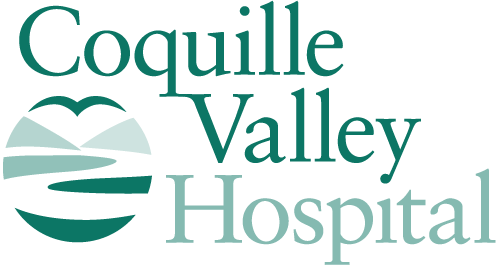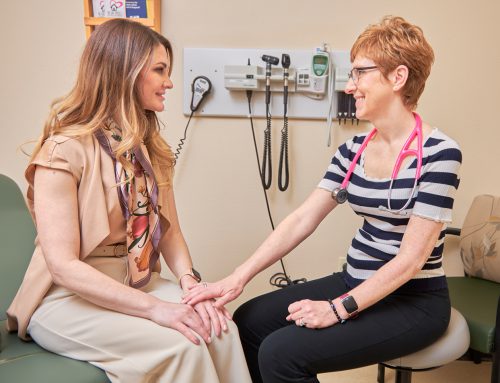Breast Cancer Awareness for Women and Men
Published October 14, 2024

Each October, the National Breast Cancer Foundation and other cancer awareness organizations spread the word about the importance of detecting breast cancer early and why it’s important. It’s a message, however, that is important year-round.
When cancer is caught in its earliest, localized stage, the five-year relative survival rate is 99%, according to the foundation. Early detection advancements also are increasing the chance of survival.
So, how can you be proactive? Get to know what’s normal for you through regular breast self-exams and schedule your annual mammogram.
Breast Self-Exam
An important step in breast self-care is to examine your breasts on a regular basis. Some women prefer to check their breasts while taking a shower or before getting dressed in front of a mirror, or by lying down in a comfortable place. Being intentional about examining your breasts, say, once a month is a good idea. It’s a good idea for men, too. Although it is rare, men can also get breast cancer.
According to the Centers for Disease Control and Prevention, several factors can increase a man’s chance of getting breast cancer, including:
- Age and weight. Most breast cancers are found after age 50. Older men who are overweight or have obesity have a higher risk.
- Family history. A man’s risk is higher if a close family member has had breast cancer.
- Genetic mutations. Inherited changes (mutations) in certain genes, such as BRCA1 and BRCA2, increase risk.
- Radiation therapy. Men who had radiation therapy to the chest have a higher risk.
- Hormone therapy. Drugs containing estrogen, which were used to treat prostate cancer in the past, increase risk.
- Klinefelter syndrome. Klinefelter syndrome is a rare genetic condition in which a male has an extra X chromosome. This can lead to the body making higher levels of estrogen and lower levels of hormones called androgens that help develop and maintain male sex characteristics.
- Liver disease. Cirrhosis of the liver can lower androgen levels and raise estrogen levels in men, increasing risk.
- Certain conditions that affect the testicles.
When examining your breasts, take note of any changes or abnormalities. Do you see puckering of the skin or other skin changes? Do you feel a lump or a hardness? Report any changes you discover to your healthcare provider right away. It may be nothing to worry about, but your ability to detect these changes is an important proactive step in early detection and increasing breast cancer survival.
Mammography at Coquille Valley Hospital
Another proactive step in breast healthcare is to schedule an annual mammogram. Depending on your age and risk factors for breast cancer, regular breast screening is an essential tool for detecting breast cancer early.
A mammogram is an X-ray picture of breast tissue. These pictures help medical providers detect tumors that can’t be felt, to note changes in breast tissue and to determine if breast tissue is dense, which is a risk factor for breast cancer.
Mammography at Coquille Valley Hospital is available in 2D or 3D. Mammograms in 2D are two pictures of each breast, taken from the top and from the side, to create a complete image of the breast. Mammograms in 3D, aka tomosynthesis, produce more pictures of each breast, creating better clarity.
Within our medical imaging facility, our 3D mammography is Hologic’s 3Dimensions system, providing high-quality 3D images for radiologists and a more comfortable experience for patients.
Both 2D and 3D mammography are in line with current screening recommendations, according to the American Cancer Society. For women with known dense breast tissue, 3D mammography and sometimes ultrasound imaging is recommended, so be sure to discuss what’s best for you with your provider.
Schedule your mammogram today!
Subscribe to our monthly emails for Your Well-Being! Get health and wellness tips, hospital news, staff spotlights, career opportunities, our cafe menu and more, sent right to your inbox!
DISCLAIMER: No content on this website, regardless of date, should be used as a substitute for direct medical advice from your primary care provider.




